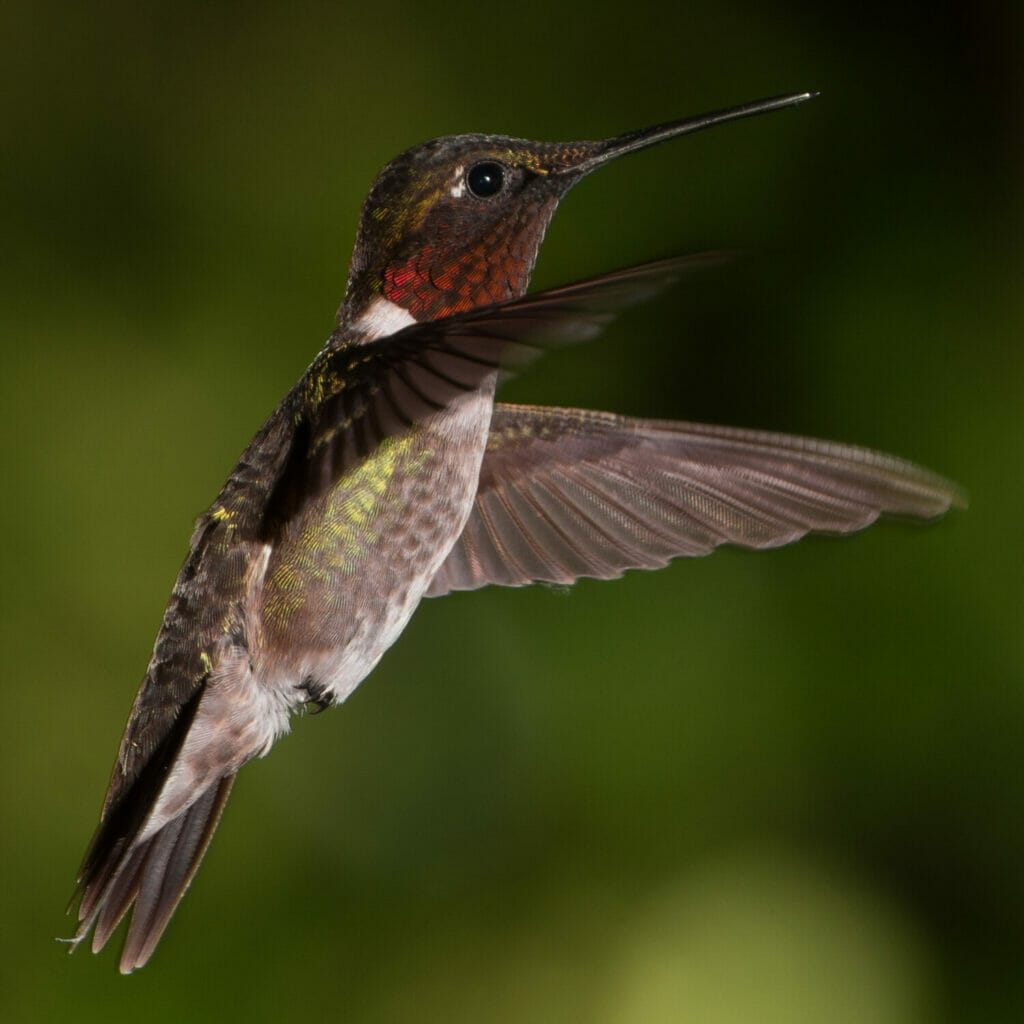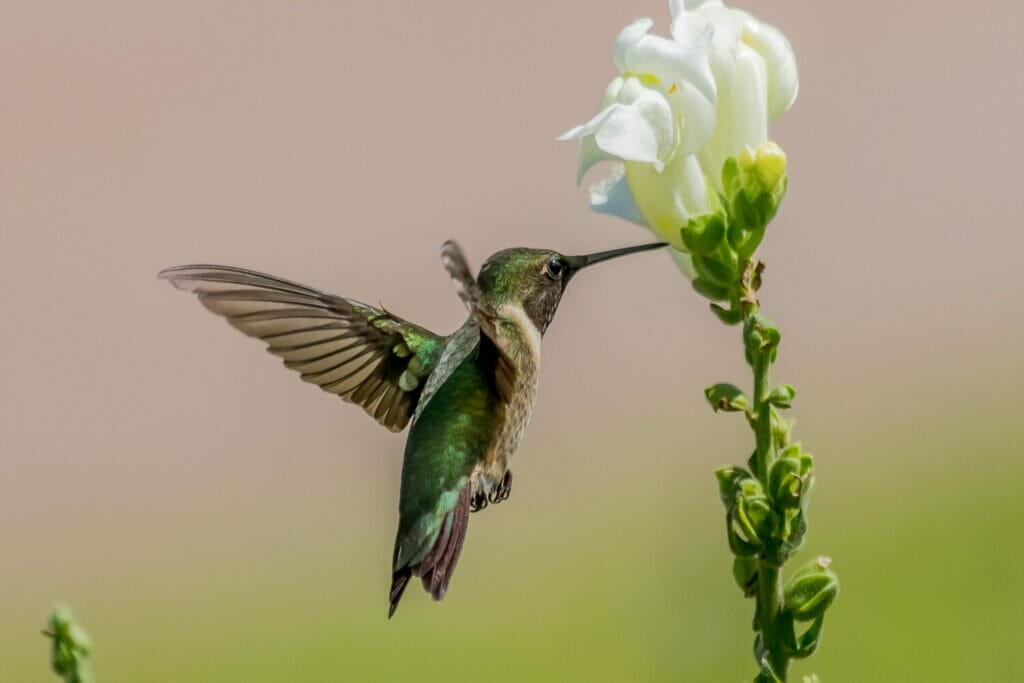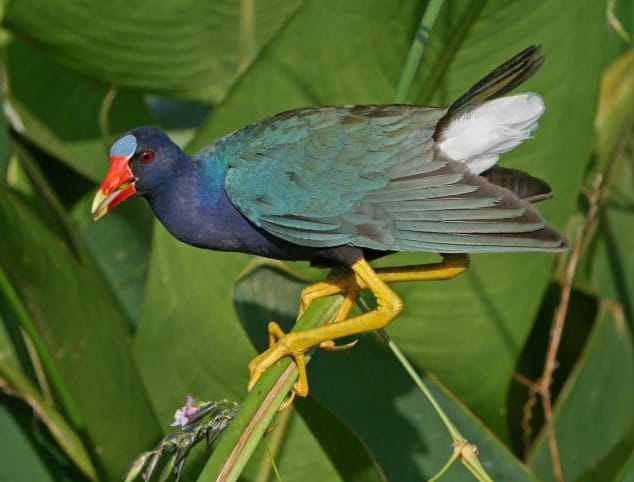Hummingbirds are some of the most beloved and fascinating creatures in the animal kingdom. Their tiny size, vibrant colors, and remarkable ability to hover and fly backwards make them a source of wonder and interest for many people.
But beyond their beauty, hummingbirds also have a unique behavior that has been studied by scientists for years: they can be surprisingly territorial. In this article, we will explore whether humming birds are truly territorial and what this behavior means for them.

What are hummingbirds?
Hummingbirds are birds from the Trochilidae family. They are found in North, Central, and South America, as well as some Caribbean islands. Hummingbirds are famous for their hovering flight.
There are over 360 hummingbird species and around 15 can be regularly seen in the U.S. The most common hummingbird in the continental U.S. is the Ruby-throated and it is the only species that breeds in the eastern parts of America. The Ruby-throated Hummingbird can flap its wings over 50 times per second. Just think about that for a moment.
Ruby-throated Hummingbird (Archilochus colubris)

Length: 2.8-3.5 in
Wingspan: 3.1-4.3 in
Weight: 0.1-0.2 oz
The Ruby-throated Hummingbird spends the summer months in suitable forest and park habitat in eastern America. Non-breeding periods are spent in Central America and these incredible birds fly across the Gulf of Mexico, a trip of over 800km when on migration. The sheer physical achievement of these tiny birds (compare the size of the bird in the photo above to the flower) cannot be underestimated. In order to complete this marathon migration, this bird will double its weight before it flies.

What is territoriality?
Territoriality is a behavior in which an animal defends its territory from other animals. This behavior is seen in many species. Territoriality helps protect the resources that are necessary for survival, such as food and nesting sites. It also helps to ensure that the individual has access to a mate during the breeding season.

Why are hummingbirds territorial?
Hummingbirds will defend their territories for a number of reasons.
Breeding
Territorial behavior is most often seen during the breeding season, when males will aggressively chase away any intruders that enter their territory. The size of a hummingbird’s territory can vary greatly depending on the species and the availability of food sources. They must protect it to ensure succesful breeding and raising of the young.
Predation
Hummingbirds will often fiercely defend their nests from predators and other birds that may try to steal eggs or young.
Competing for nectar sources
Hummingbirds are fiercely competitive when it comes to nectar sources. Male hummingbirds will frequently stake out a patch of blooms and defend it with great vigor, as flowers only last for a limited time.
Flowers produce nectar, which is rich in sugar, to attract these creatures. In turn, the birds and insects pick up pollen from one flower and carry it to another, helping the plant to reproduce. So a territorial hummingbird is beneficial for both the bird and the flowers; the birds get a reliable source of food, while the flowers get pollinated.
In addition, not only do they provide pollination services, but they also help spread genetic diversity among plants by carrying pollen from one flower to another. This helps ensure that plants can continue to thrive in their environment over time.

Photo by Imogen Warren
How do they show territoriality?
Hummingbirds use a variety of methods to defend their territory.
- performing aerial displays, such as dive-bombing or chasing away intruders
- making loud vocalizations
- aggressive postures to ward off competitors
- spreading its wings to appear larger and more intimidating
- fighting with one another over resources by using their bills to peck
Dealing with aggressive hummingbirds
In some cases, hummingbirds have been known to attack humans who get too close. Fortunately, there are several ways to stop aggressive hummingbirds.
Providing multiple feeders in different locations so that individual birds have their own space. This will help reduce competition between the birds and make it easier for them to find food without having to fight with one another.
Additionally, providing plenty of natural nectar sources such as flowers or shrubs can help reduce competition as well.
Finally, using feeders with perches can help keep the birds away from each other since they won’t be able to hover around the same area while feeding.
By following these tips, you and your family should be able to enjoy watching these feathered friends without worrying about aggression or territorial disputes.
Conclusion
Understanding territorial behavior can help us better appreciate and protect these amazing creatures. If any bird acts aggressively towards you, the rule is simple. Just move away. All birds will act to protect their young and hummingbirds, despite their tiny size, are no exception. Batting away an angry hummingbird is likely to just hurt it. Leaving it alone is always the best idea.

FAQ
Increasing the availability of food is the best way to stop competition between hummingbirds. Rather than having 1-2 feeders, try having at least 6.
Very. Hummingbirds have proportionately large brains and they use it to memorize the important features of their territory.
Yes, small raptors like kestrels and kites will take hummingbirds, if they can catch them.
It takes a lot of energy to keep those wings beating so fast. Hummingbirds need to eat every 15 minutes so if you see them flying around, the chances are they are looking for food.










